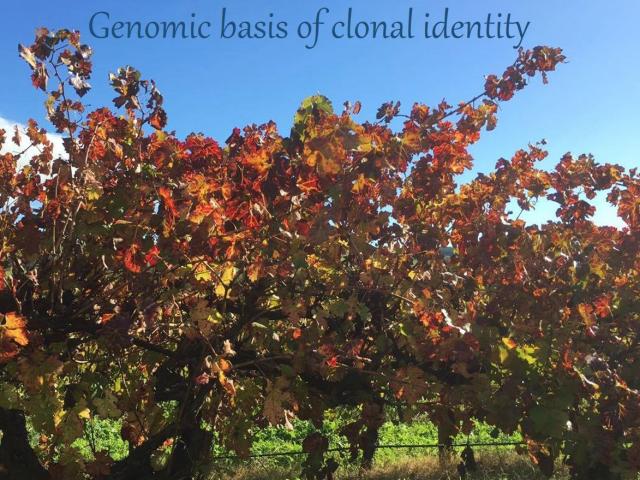Clones - what’s in a name?
Part 2.
In September last year we introduced some of the underlying causes of clonal variation. There has been some exciting progress in the world of viticulture, for example a group we are working with in the USA are readying to publish the first genome sequence of Cabernet Sauvignon. We’ll explain the implications to Australian and WA viticulture in a future issue.
Here we wanted to introduce Wisam Salo, a PhD student who has just commenced his project to interrogate the variation among the Houghton Cabernet Sauvignon clones. His main focus will be role of virus infection in the expression and stability of clonal identity.
Previous work conducted by DAFWA identified three of the advanced Houghton clones. When we commenced this research we were unsure if we would be able to access these vines, but recently the team at Accolade have recovered one of the foundation blocks in Gingin.
Virus expression played a big part in identifying the clones within the vineyard. Wisam’s research will have three primary aims:
- identify genetic fingerprints of all of the Houghton clones in that block.
- identify virus type and load in these clones.
- investigate the influence of viral load on fruit quality, at the gene and metabolite levels.
Wisam will be using whole genome sequencing technologies, from which markers will be designed to distinguish between clones. These fingerprints will be tested on vines from other vineyards, such as Margaret River, where we also have some confidence in the identity of a subset of clones.
Identification of viral type will be determined by RNA-sequencing (RNAseq), and viral load by quantitative PCR (qRT-PCR). Moreover, the impacts of viral load on fruit composition will be investigated, using analysis of metabolites in the must and RNAseq to investigate gene expression of known flavour precursors. This will be done in at least two years, with comparison to fruit of uninfected clones.
By the end of this project, the complete genome for Houghton clones will be sequenced, candidate markers will be established to assist in clone’s identification and selection, viral type and load will be determined by carrying out RNASeq analysis. In addition, the variation in gene expression due to the virus will simultaneously provide a complete picture for the expression of aroma precursor genes.
Acknowledging the kind support of Accolade Wines (Houghton), including Rhys Thomas and Brad Turner. This project will be carried out as a part of the ARC Linkage Project (LP130100347), which is partnered by WAVIA on behalf of several WA wine companies, DAFWA on behalf of the WA viticulture industry, Yalumba, AWRI and La Trobe University.
Cheers, Mick
University of Western Australia, and the Department of Agriculture and Food Western Australia
+61 (0)8 6488 1783
University of Western Australia
+61 (0)47 852 9065

